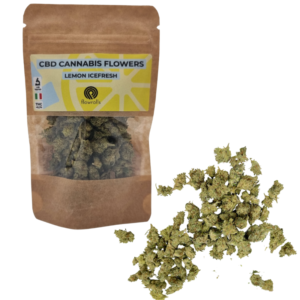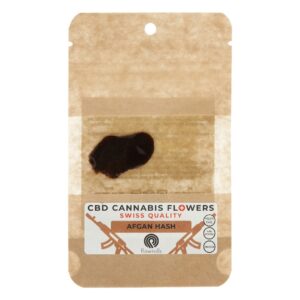
CBD hemp drought comes from Swiss indoor Cannabis Sativa L. It is fiber hemp which has less than 0.2% THC , which makes the product is legal in the territory of the European Union. It was cultivated with organic methods. All our Swiss varieties have about 4-6% phytocannabinoid concentration. These are natural CBD concentrations without being artificially overstated with isolates.
This variety of hemp after harvest has been precisely trimmed and dried, which means that the package includes only flower buds without leaves and seeds. Thanks to this, the dried is perfect for aromatization.
Drought has been tested both by the laboratory in Poland and Switzerland. Each package has a QR code which after scanning shows current chemical analyzes for a specific batch. This allows you to safely travel with drought without printed studies. Glass jars are sealed and inspected prior to shipment. It is also worth adding that our varieties have been successfully verified by the Warsaw police. Our priority is high quality and legality of products.


CBD is one of over 100 cannabinoids, the natural compounds found in the cannabis plant. Along with THC, it is the main active compound found in cannabis because it is found in the highest concentrations, which is why it is the most recognized and best studied. CBD is the legal and most important active substance in medical marijuana and cannabis, with a very broad spectrum of activity. Of the several hundred substances found in cannabis, CBD has the strongest health properties and has no psychoactive properties , so it can be used as a comprehensive therapeutic agent without fear of changing consciousness.
Cannabidiol (CBD), unlike THC, has no side effects, is not intoxicating and is not addictive. CBD is a completely safe component of hemp that mimics the effects of substances found naturally in the human body. Substances with a similar effect and chemical structure can be found in the body of every human being, and even in breast milk. Cannabidiol is perfectly tolerated by the human body and it is impossible to overdose it.
Therapeutic properties of CBD
- Neuroactive and neuroprotective – fights mental disorders, including depression and anxiety, regenerates nerve cells in the body, stimulates the nervous system, reduces epilepsy, has a relaxing and antispastic effect, reduces seizures and spasms, soothes symptoms of multiple sclerosis.
- Antitumor – attacks and destroys cancer cells, inhibits the proliferation of cancer cells, leads to apoptosis, i.e. suicide of cancer cells.
- Antioxidant – reduces oxidative stress, slows down and prevents the aging of cells and tissues, supports the body’s natural defenses, protects against free radicals.
- Anti-inflammatory – inhibits the inflammation process, fights inflammation, prevents inflammation, protects the liver.
- Analgesic – relieves pain, soothes and eliminates pain throughout the body, both internally and externally.
- Antipsychotic – sobers and cleanses the mind, fights psychosis and anxiety, calms and calms down, has a relaxing and relaxing effect, helps to fall asleep and ensures good sleep , supports, helps with schizophrenia.
- Antiemetic – reduces nausea and vomiting, stimulates thirst and appetite, affects the proper metabolism of the body.
- Antibacterial – has strong bactericidal properties, kills bacteria and prevents them from multiplying, slows their growth, acting similar to antibiotics.
- Antifungal – prevents the development of fungal diseases, kills mold and fungi.
- Antiallergic – soothes and eliminates allergy symptoms.
- Immunological – stimulates the body’s natural immunity, stimulates the state of homeostasis.
- Dermatological – accelerates wound healing, fights skin diseases, rejuvenates the epidermis, reduces the effects of skin diseases such as acne and improves the overall condition of the skin.
- Drug addiction – can help you quit smoking and can be used as a replacement therapy for drug addiction, as well as helping to combat other addictions.
- Improves concentration and increases cognitive abilities through dopamine regulation
| Choose the size | 1g, 2g, 5g, 10g |
|---|












